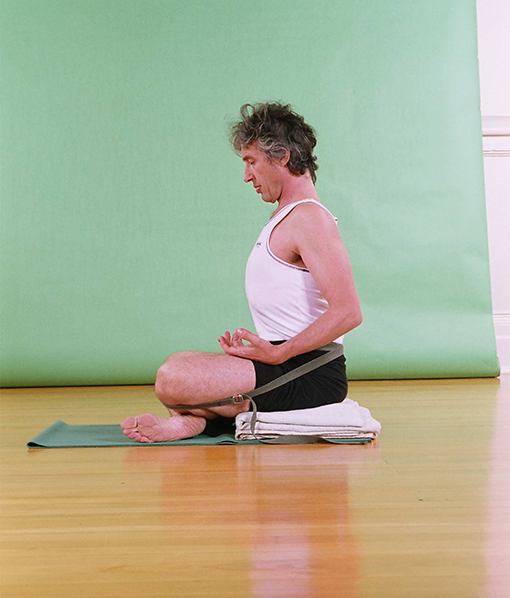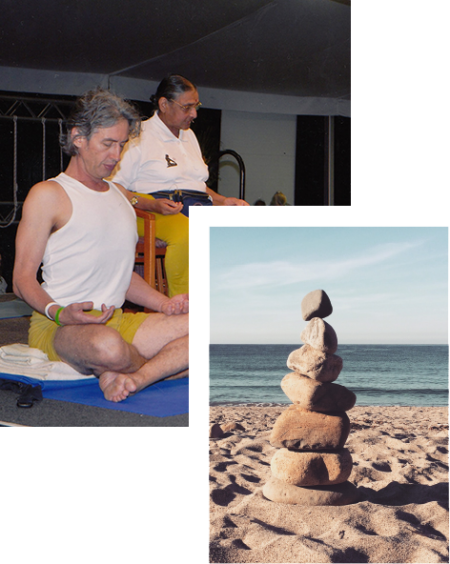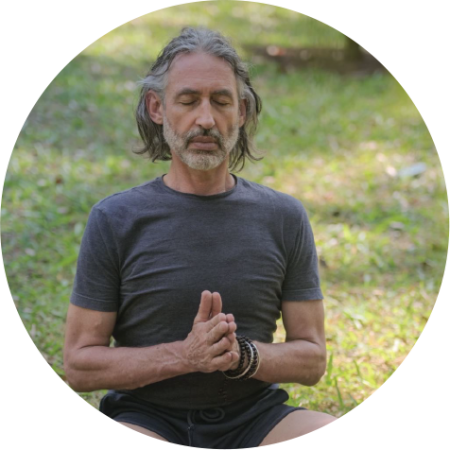Pranayama
The power of breathing
Peter first discovered Pranayama Yoga during one of his many trips to India where he learnt Pranayama from Geeta Iyengar in the late 80s.
Through the years, he has acquired deep knowledge in Pranayama breathing techniques and taught his students this practice to reduce stress, stimulate concentration, self-awareness and promote overall physical and mental health.
What is Pranayama breathing?
Pranayama is the practice of breath regulation in yoga and is often used with other practices like asanas (physical postures) and dhyana (meditation). Pranayama means “breath control” and is a combination of two Sanskrit words, “Prana” which means life force and “ayama” which means control.
This breathing technique controls the amount and flow of vital energy into the body. While, the purpose of Pranayama is to connect your body and mind together by supplying your body with oxygen while removing toxins. It also provides a way for your body and lungs to improve the efficiency of your oxygen intake.


How to do Pranayama breathing?
Pranayama is an integral part of yoga, but not always an easy one to grasp. Peter will guide and teach you the specific breathing techniques and sequences will help you to practise Pranayama properly.
You will be given practical guidance and breathing lessons on techniques, breathing exercises, patterns and sequences that are known to reduce stress, aid in digestion, improve sleep, and put you on the right track to achieve mental clarity.
Peter understands every student’s needs are different, and works with students patiently at their pace by providing constructive feedback to help you reach that state of stillness and quietness.
When to do Pranayama?
Pranayama can be done anytime, but the ideal time for practicing Pranayama is preferably in the early mornings around sunrise.
The second best time is in the evening around sunset. Mornings are ideal as it invigorates breathing and boosts energy and concentration. While, calming Pranayamas techniques are great in the evenings to unwind. Pranayama is ideally practised after asanas and before meditation.
Benefits
Pranayama is beneficial to the body, mind and heart.
1. Pranayama for Stress
Slow breathing techniques reduce anxiety and calm the mind.
2. Pranayama for Energy.
Expansive breathing techniques reduce fatigue and boost energy.
3. Pranayama for Respiratory System.
Both fast and slow breathing techniques strengthen the respiratory system and increaselung
capacity improving pulmonary functions.
4. Pranayama Benefits for Brain Power.
Both fast and slow breathing techniques improve concentration andpromote
cognitive mental functions.
5. Pranayama Benefits for Heart.
Slow breathing lowers high blood pressure and hypertension.
6. Pranayama Benefits for Blocked Ears.
Deep breathing exercises and exhalation improves hearing.
7. Pranayama for Sleep.
Slow deep breathing may also help you to sleep better and decrease snoring.
According to scientific studies, there are many medical benefits of Pranayama. Asthma patients showed improvement in pulmonary function after practising Pranayama for 45 mins a day over a period of 2 months and chemotherapy patients showed improvement in mood and sleep after adopting Pranayama into their daily routines.

Pranayama Yoga Classes with Peter Scott
Peter’s classes are designed based on years of study and research to help students find a few moments of calm, peace and relaxation.
Each Pranayama class is different and Peter wholeheartedly believes communication is key in his Pranayama Yoga sessions. In each lesson with Peter, you can expect constant feedback and insights that will help you achieve better physical as well as mental health and a stronger immune system.
Pranayama Yoga classes can be learned in individual or group settings and are incredibly fulfilling – with many students feeling calm and de-stressed after each session.
Peter has taught Pranayama Yoga to students all across the world, and is recognised for his ability to understand each individual’s requirements and has successfully transformed the lives of his students through Pranayama helping them to achieve and nurture a high level of bodily health and mental clarity.
Through his experience in teaching Pranayama Yoga, Peter has discovered that this method of yoga works especially well with students who face minor fatigue, anxiety, and depression.
In stressful times, we typically breathe too rapidly, especially at times like this as we go through a global pandemic.
Online classes allows Pranayama Yoga to reach more lives than ever before, with yoga students from around the world learning the techniques, sequences and improving their breathing with Peter’s guidance and expertise. Check out his Pranayama breathing video.
Whether you prefer group sessions or one-to-ones, Peter’s years of experience and knowledge of Pranayama Yoga will help you enhance your wellbeing and state-of-mindfulness.

